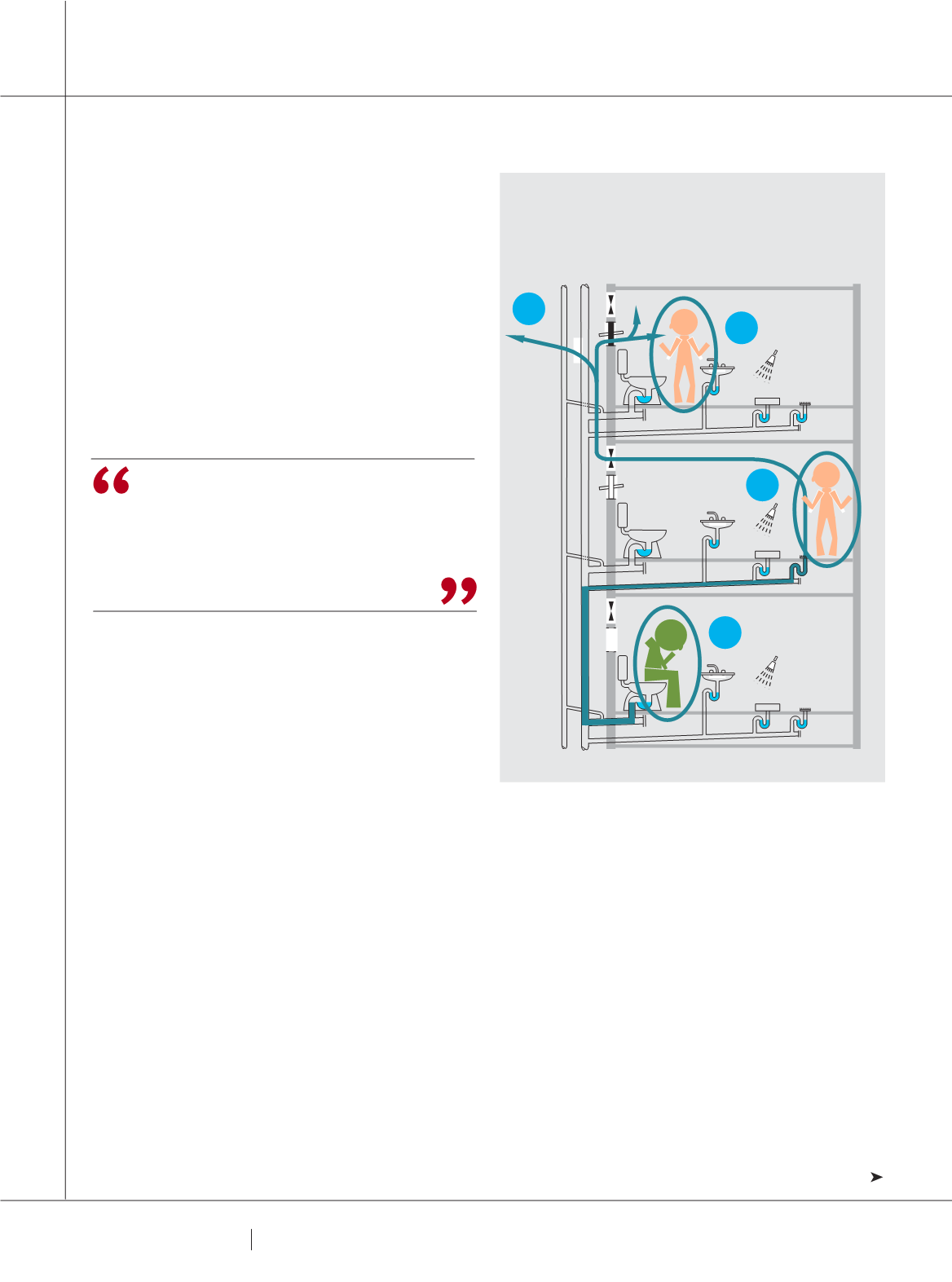

5 4
PLUMBING CONNECTION
SPRING 2015
conditions conducive to virus survival. The temperatures
recorded were in the mid-20° Celsius range, and had
the combined effect of inducing buoyant air flows and a
transport mechanism for the virus. A significant finding
from this phase of the research was the confirmation that
airflows in vertical stacks are in both directions – both
up and down. This mechanism facilitates air travel from
one part of the building to another – in effect the drainage
system has its own micro climate and there is no isolation
of one part of it from another. Ensuring a seal between
the internal rooms and the drainage system is therefore
essential to prevent virus laden aerosols entering habitable
space.
HOW IT WORKS
The Dyteqta-System uses innovative sonar technology to
monitor a building’s drainage network while detecting any
loss in water trap seals which are vulnerable to a number of
threats such as evaporation and/or positive and negative
pressure surcharges, amongst other reasons.
When these vital seals are lost, sewer gas containing
contaminated air and harmful pathogens, in the form of
Bioaerosols, present in the drainage and sewer system can
enter the building and spread infection and/or foul smells.
Most, if not all, have experienced the foul stench that can be
experienced when pipes have blocked or backed up and the
thought alone is enough to put you off your next cut lunch.
Steven explains that the spread of infection and foul
smells can be stopped thanks to Dyteqta’s monitoring
system.
“The system uses soundwaves to send a signal into the
system to search for the trap seals. If a barrier has been
lost, the system will send an alarm and identify where the
defective seal is located. By connecting Dyteqta’s testing
equipment to a drainage system, we can remotely test all
of the traps connected to it from anywhere in the world, as
long as it is connected to the internet.
“Detection is accurate to within one metre for partial
blockages and 20cm for trap seals.” Once a default is
detected, the Dyteqta System sends a message, either via
email, SMS or through the buildings Building Management
System to alarm facility management.
“Testing is both non-destructive and non-invasive so
building occupants are unawares while it is occurring,”
Steven explains. “There are various methods for system
monitoring too, from a full-time monitored system, fault-
finding during system health checks or before a building
handover. A prospective buyer or lessee of a building now
has an opportunity to detect and rectify drainage problems
before they agree to terms. It almost provides the option to
try before you buy,” Steven says.
“The trap seal detection device can be installed in new
buildings or retrofitted to existing drainage networks to
remotely monitor the functionality of water trap seals on a
full or part-time basis as required. The system is designed to
work with any combination of drainage networks and is
DEFECTIVE WATER TRAP SEALS
TRANSMISSION OF HARMFUL
PATHOGENS AND CROSS-CONTAMINATION
OF LIVING SPACE
A:
Wind current carries aerosols to adjacent buildings.
B:
Contaminated aerosols transmitted to adjacent
apartment.
C:
Infected person introduces virus to drainage
system.
D:
Contaminated aerosols created as waste is
flushed away.
A
C
B
D
TESTING IS BOTH NON-DESTRUCTIVE
AND NON-INVASIVE SO BUILDING
OCCUPANTS ARE UNAWARES WHILE
IT IS OCCURRING.
















